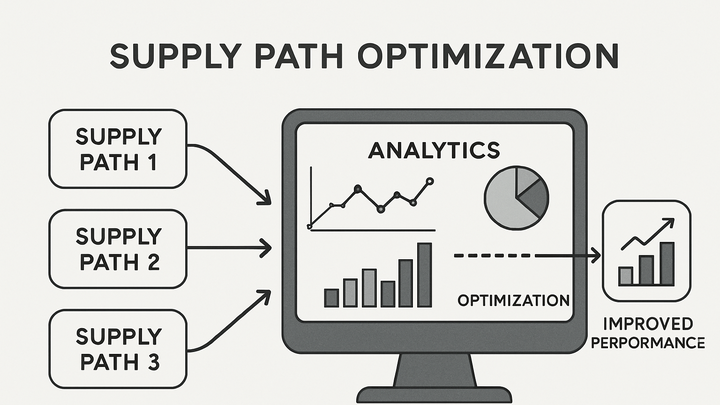Published on 2025-06-22T09:42:19Z
What is Supply Path Optimization (SPO)? Examples with PlainSignal and GA4
Supply Path Optimization (SPO) is a strategic approach in digital advertising and analytics that focuses on optimizing the routes through which ad inventory is sourced. It involves evaluating each intermediary—from ad exchanges to supply-side platforms—to ensure transparency, control costs, and improve campaign performance. By leveraging analytics platforms such as Google Analytics 4 (GA4) and cookieless solutions like PlainSignal, marketers can track critical metrics to refine their supply chains. Commonly analyzed metrics include fill rate, effective cost per mille (eCPM), and latency, which reveal inefficiencies and opportunities for negotiation. Implementing SPO often requires integrating lightweight tracking snippets to capture performance data without compromising user privacy. When combined, GA4’s robust event analytics and PlainSignal’s simple, cookie-free tracking provide a comprehensive view of supply path performance. Ultimately, SPO helps reduce hidden fees, increase transparency, and maximize return on ad spend (ROAS).
Spo (supply path optimization)
Supply Path Optimization refines ad inventory supply chains to boost transparency, performance, and ROI.
Why Supply Path Optimization Matters
SPO is essential for uncovering hidden fees, improving performance, and ensuring that ad budgets deliver maximum value.
-
Enhanced transparency
SPO provides visibility into each intermediary in the ad supply chain, helping identify hidden fees and inefficiencies.
-
Improved roi
By selecting supply paths with the best performance metrics, advertisers can allocate budget more effectively and boost campaign outcomes.
Key Metrics for SPO
Tracking the right metrics is crucial for identifying underperforming supply paths and making data-driven optimization decisions.
-
Fill rate
The percentage of ad requests that are successfully filled. Low fill rates can indicate issues with certain intermediaries.
-
Ecpm
Effective Cost Per Mille measures revenue earned per 1,000 impressions and helps compare yield across different supply paths.
-
Latency
Time taken for an ad to load. High latency affects user experience and can reduce viewability.
Implementing SPO with PlainSignal and GA4
Combining lightweight, privacy-friendly tracking with comprehensive analytics allows for end-to-end SPO analysis.
-
PlainSignal integration
Use PlainSignal’s script to capture supply path metrics without cookies. Example implementation:
-
Tracking snippet
<link rel="preconnect" href="//eu.plainsignal.com/" crossorigin /><script defer data-do="yourwebsitedomain.com" data-id="0GQV1xmtzQQ" data-api="//eu.plainsignal.com" src="//cdn.plainsignal.com/plainsignal-min.js"></script>
-
-
GA4 event tracking
Set up custom events in Google Analytics 4 to ingest supply path data from PlainSignal and correlate it with campaign performance.
Best Practices for SPO
Adopt these practices to maintain an efficient, high-performing supply path over time.
-
Regular audits
Periodically review supply chains to catch new intermediaries or degraded performance.
-
Consolidate partnerships
Negotiate directly with top-performing partners to reduce layers and costs.
-
Automated optimization
Use programmatic tools that dynamically adjust bidding and path selection based on real-time metrics.
Challenges and Limitations
Despite its benefits, SPO faces technical and organizational obstacles that must be managed.
-
Data integration complexity
Collecting and unifying data from multiple analytics sources requires robust infrastructure.
-
Industry fragmentation
With many buyers, sellers, and tech providers, building a comprehensive SPO strategy can be challenging.
-
Privacy regulations
New privacy rules can limit tracking capabilities, affecting supply path visibility.
